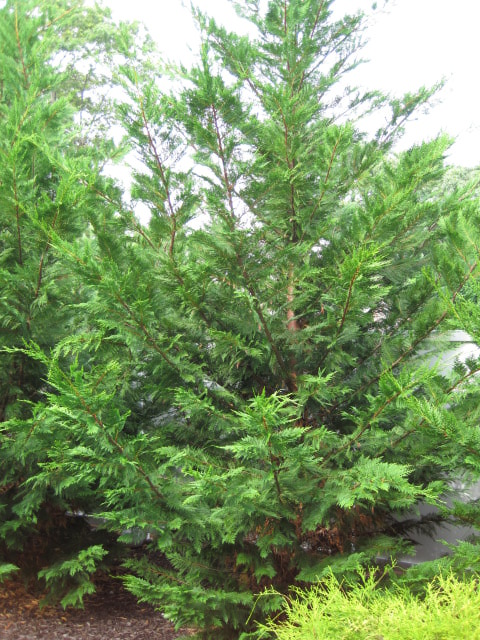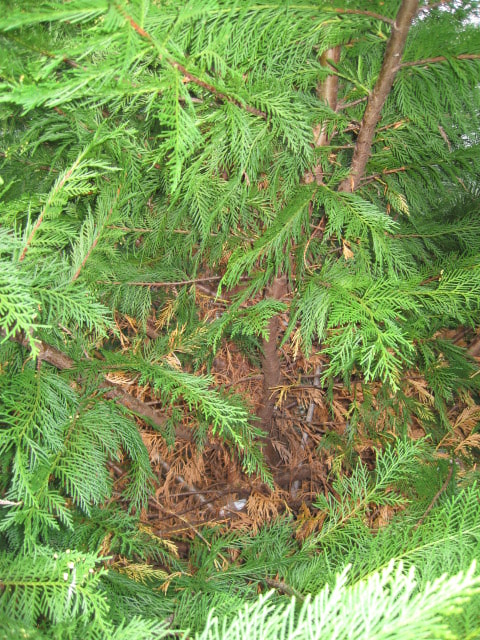QuestionQUESTION: I live on the East Coast in NY and I have about 7 Leyland Cypress approximately 2 years old and this year i noticed that the interiors are yellowing and the foliage is then falling off. I was told that this is a fungus "pestalotiopsis" and to treat it accordingly however after tapping one of the branches onto a piece of white paper i noticed a number of tiny bugs crawling all around. Could this be fungal? or Spider Mite issue? I checked numerous websites and it appears it "could" be both...the tips of the tree look fine and healthy, it's only the interior.
Thanks!
ANSWER: Hi Samantha:
Can you send me a photo of a tree that shows this yellowing?
Your symptoms do not sound like the canker disease called Branch Canker. Spider mites can attack these trees, but are not limited to just the interior. Spider mites are small (pin point)yellowish-red and can be seen on a white sheet of paper. They tend to be worse during hot dry weather. Interior leaf shedding can be normal on many evergreens like the Leylands. It is a function of shading. We see this effect especially as the tree gets big and older.
I will be happy to look at a photo if you can send. Be sure it is in focus by reviewing the image on your computer first. The photo needs to show a big part of the tree.
Regards
Steve
---------- FOLLOW-UP ----------
 Leyland Cypress
Leyland Cypress
 Leyland Cypress
Leyland Cypress
QUESTION: Here are some pictures as per your request....
Thanks!
ANSWER: Samantha:
Thanks for your images. Tips indeed do look fine. Don't think the canker disease is present. If you see any brown twig tips develop (out on the ends of the branches), time to prune it out and destroy. Make your cut 4-6" below the edge of the brown area. The branch canker is probably the most significant disease of these plants.
I suspect that the internal browning is a function of shading. To be sure, you can collect a few of these brown twigs/leaves and carry by your local county Agricultural Extension service for them to look at under some magnification. There is an office usually in the courhouse of the county seat. There are a few minor fungal organisms that can affect the foliage. The Pestalotia and Pestalotiopsis are among them. These two fungi are usually considered weak pathogens. If feasible/practical, you can rake up the fallen leaves and tree debris and destroy. This is a good general method of sanitation and can help to prevent/reduce some diseases the following growing season. It is also best to avoid overhead irrigation if possible. Try to keep the foliage dry. If you can, water these trees from below.
This is a beautiful tree. We have many planted in this area. I often see it planted as a row or screen. Common mistake: people often plant these too close together- this leads to competition and diseases--.
Regards
Steve
---------- FOLLOW-UP ----------
QUESTION: Hate to say it but I think that I did plant one too many...I planted about 10 when I should have planted a little more than half. However I will make sure that i take care of them and hire a tree expert to fertilize and prevent future issues.
Thank you in advance for your help!
AnswerHi Samantha:
No problem. It is a common oversight. Most folks don't realize these puppies can get big. On a good site, they can grow 40-60ft tall. When they are grown for a screen or in a row, people want a quick fill in and they put these too close together. In a situation like that , they should not be plant them closer that 12 ft apart.
But the shading effect happens on many junipers and other evergreens. The outside branches literally shade out the interior leaves over time.
Enjoy your tree and don't forget to look out for that canker disease.
Regards
Steve







